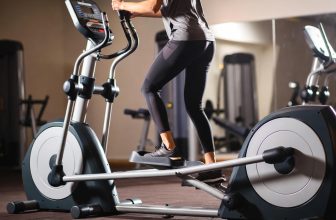Table of Contents
As an Amazon Associate, I earn from qualifying purchases.
Are Elliptical Machines Good for You?
Are Elliptical Machines Good for You? Yes, elliptical machines are highly effective for low-impact cardio, burning 270–400 calories per 30 minutes, improving heart health, and building endurance without joint stress.
Benefits of Elliptical Machines
Elliptical trainers deliver full-body workouts with minimal joint impact. They engage upper and lower body simultaneously, boosting efficiency.
- Cardiovascular Health: Regular use reduces heart disease risk by 20–30%. A Mayo Clinic study shows 150 minutes weekly of moderate elliptical exercise lowers blood pressure and cholesterol.
- Calorie Burn and Weight Loss: Users burn 2.16 calories per pound of body weight hourly at moderate intensity. Harvard Health reports a 155-pound person burns 324 calories in 30 minutes.
- Muscle Toning: Handles target arms, chest, and back; pedals strengthen quads, hamstrings, glutes, and calves. Reverse motion isolates hamstrings and glutes more effectively.
“Ellipticals provide weight-bearing exercise that maintains bone density, crucial for osteoporosis prevention.” – American Council on Exercise.
| Benefit | Statistic | Source |
|---|---|---|
| Heart Disease Risk Reduction | 20–30% with consistent use | CDC Physical Activity Guidelines |
| Bone Density Improvement | Up to 3% increase in 6 months | Journal of Bone and Mineral Research |
For detailed benefits, see WebMD’s guide on elliptical workouts.
How Ellipticals Compare to Other Cardio Equipment
Ellipticals outperform treadmills and bikes in joint safety while matching calorie burn.
- Vs. Treadmills: 50% less knee impact; ideal for arthritis sufferers. A study in Gait & Posture found elliptical stride reduces ground reaction forces by 25%.
- Vs. Stationary Bikes: Engages upper body for 15–20% higher calorie expenditure. Bikes focus solely on legs.
- Vs. Rowing Machines: Similar full-body engagement but ellipticals allow upright posture, reducing lower back strain.
Bold Advantage: Adjustable resistance and incline mimic hill climbing without outdoor risks.
Potential Drawbacks and Risks
No equipment is perfect. Overuse leads to issues.
- Muscle Imbalances: Forward-only motion neglects posterior chain; alternate directions weekly.
- Plateau Risk: Vary intensity to avoid adaptation. HIIT intervals prevent stagnation.
- Injury from Poor Form: Hunching strains neck and shoulders. Maintain upright posture with loose grip.
Statistic: Only 2% of users report injuries versus 10% on treadmills (Journal of Orthopaedic & Sports Physical Therapy).
Mitigate risks with proper setup—consult ACE Fitness form tips.
Who Benefits Most from Ellipticals
- Beginners and Seniors: Low-impact entry to fitness.
- Rehab Patients: Post-knee surgery favorite; 80% of physical therapists recommend (Physical Therapy Journal).
- Busy Professionals: 20-minute sessions yield results equivalent to 40-minute walks.
Tips for Maximizing Results
- Incorporate Intervals: 1 minute high resistance, 2 minutes recovery—boosts metabolism 15%.
- Track Metrics: Use built-in monitors; aim for 70–85% max heart rate.
- Combine Strength: Pair with weights 2x/week for balanced physique.
FAQ
Q: Can ellipticals help lose belly fat?
A: Yes—consistent cardio reduces visceral fat by 7% in 12 weeks (Obesity Journal).
Q: How long should I use an elliptical daily?
A: 30–45 minutes, 4–5 days/week meets WHO guidelines.
Q: Are ellipticals better than running?
A: For joint health, yes; for bone impact, running edges out slightly.
Q: Do ellipticals build muscle?
A: Tone, not bulk—add resistance bands for hypertrophy.
Final Thoughts
Ellipticals excel in safe, efficient cardio for diverse fitness levels. Prioritize form, variety, and progressive overload for sustained gains. Track progress and consult professionals for personalized plans.







